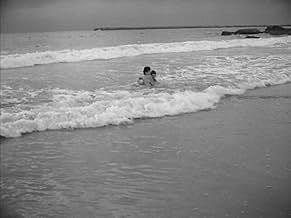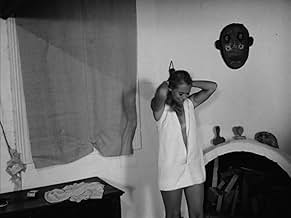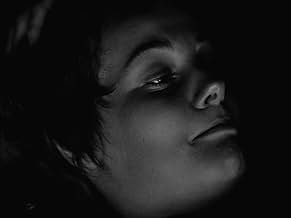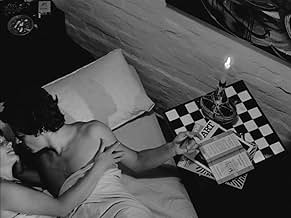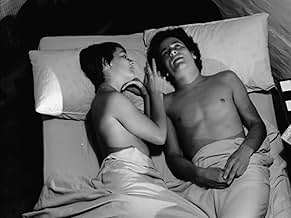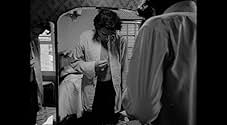Aggiungi una trama nella tua linguaPaul Lawrence is a working class man who dates Cara, sells shirts at a Sydney department store, and dreams of attending art school.Paul Lawrence is a working class man who dates Cara, sells shirts at a Sydney department store, and dreams of attending art school.Paul Lawrence is a working class man who dates Cara, sells shirts at a Sydney department store, and dreams of attending art school.
- Regia
- Sceneggiatura
- Star
Sean Myers
- Paul Lawrence
- (as Sean McEuan)
Amber Rodgers
- Cara
- (as Julie Rodgers)
Elza Stenning
- Baroness Bronoski
- (as Elsa Jacoby)
John Rhall
- Blonde Waiter
- (non citato nei titoli originali)
Roger Ward
- Dancer at Party
- (non citato nei titoli originali)
Recensioni in evidenza
What a schtinker.
Maybe back in the day, the film was shocking. Lots of bare boobies. One hairy chest A few bare bottoms.
As an historical gay themed film, it's interesting, but beyond that, it's pretty dull. The music and dancing look dated even for the Swingin' Seventies. The film has a lotta swinging going on, but for today's audience, it's more ho-hum than inflammatory.
The women's hairdos are interesting. Must have been a lot of VO-5 on the set.
The acting is on the lower end of so-so, and the cinematography was too. Movie makers have thankfully honed their skills since the making of The Set.
There are some really crude representations of the 'derelict lifestyle.' Like when Paul opens a can of beer for Tony, and tosses the tab from the can into the refrigerator. Tony just throws his on the floor. The ashtrays are humorously full of butts. Except for the ones on the floor around the fireplace.
The bathroom, however, is quite clean and tidy for a two-bachelor pad.
And then there are some quite mysterious scenes that could have been for another movie. Tony tossing a football around in the street with the neighborhood kids, and giving one of them a harmonica whose real significance fallen out of the script.
The whole film is an eye-roller. But maybe it's an interesting peek into the seventies for those who never experienced it.
Enjoy. But don't expect much. Though I suppose the intent was some sort of social redemption at the end, where ALMOST everyone is having a rollicking good time. .
Maybe back in the day, the film was shocking. Lots of bare boobies. One hairy chest A few bare bottoms.
As an historical gay themed film, it's interesting, but beyond that, it's pretty dull. The music and dancing look dated even for the Swingin' Seventies. The film has a lotta swinging going on, but for today's audience, it's more ho-hum than inflammatory.
The women's hairdos are interesting. Must have been a lot of VO-5 on the set.
The acting is on the lower end of so-so, and the cinematography was too. Movie makers have thankfully honed their skills since the making of The Set.
There are some really crude representations of the 'derelict lifestyle.' Like when Paul opens a can of beer for Tony, and tosses the tab from the can into the refrigerator. Tony just throws his on the floor. The ashtrays are humorously full of butts. Except for the ones on the floor around the fireplace.
The bathroom, however, is quite clean and tidy for a two-bachelor pad.
And then there are some quite mysterious scenes that could have been for another movie. Tony tossing a football around in the street with the neighborhood kids, and giving one of them a harmonica whose real significance fallen out of the script.
The whole film is an eye-roller. But maybe it's an interesting peek into the seventies for those who never experienced it.
Enjoy. But don't expect much. Though I suppose the intent was some sort of social redemption at the end, where ALMOST everyone is having a rollicking good time. .
The Set is Australia's first modern film. It's a non-judgmental adult-drama that explores gender and sexuality in a way that would happen again for decades. It's probably the world's first queer film. It's also groundbreaking in terms of being the first Australian produced film to contain sex scenes and nudity. It also a kicking jazz score and is quite funny in part.
It's a gem of a film that's well worth your time.
It's a gem of a film that's well worth your time.
10dandles2
A great period piece from the late Sixties. Depicting life amongst the arty 'set' in Sydney in 1969, it was one of the first Australian feature films to include homosexuality as a main theme. The film features celebrated Sydney drag queen "Candy" (Ken Johnson). Ex- Mavis Bramston Show star, Hazel Philips. The camp Theatre director character played by Michael Charnley is based on Robert Helpman. The film has a number of fun, campy moments, which helps make it a gem in Australian gay film history . The Australian tabloid press sensationalised the scandalous 'nude' scene by Hazel Philips in the swimming pool, rather than any depiction of homosexual relationships. Reporters broke the story in early 1969, during filming, about a year before theatrical release. Hazel Philips was quoted as saying that if Vanessa Redgrave was game enough to appear nude in a film, she'd like to try it too. The Soundtrack includes some groovy sixties lounge music by Sven Libaek . There apparently was a vinyl disc made of it. The Australian National Film & Sound archive hold a copy of the film.
It may have worked in its time, but watching it in 2024 it's absolutely "cringeworthy"
No matter HOW you view it, you'd think the director had just discovered homosexuality - and run with it, with all the class and finesse of an episode of an episode of No. 96.
No. 96 and The Box were the first introduction to the "full frontal" on the small B&W screen in Australia.
I must confess I couldn't sit through "The Set" in its entirety.
You may be able to endure, if you could cast your mind back to being a thirteen-year-old boy, for the duration.
The 1970's were a renaissance for Australian film and film makers.
But THIS little curio is, today, strictly a museum piece - and a reminder of just how far Australian cinema has evolved - but, otherwise, something best forgotten.
No. 96 and The Box were the first introduction to the "full frontal" on the small B&W screen in Australia.
I must confess I couldn't sit through "The Set" in its entirety.
You may be able to endure, if you could cast your mind back to being a thirteen-year-old boy, for the duration.
The 1970's were a renaissance for Australian film and film makers.
But THIS little curio is, today, strictly a museum piece - and a reminder of just how far Australian cinema has evolved - but, otherwise, something best forgotten.
'The Set' was made two years before Australian television led the world in its depiction of sex in the classic soap 'Number 96'. Clunky and clumsy though much of the film is, there is a freshness and immediacy about some of its scenes that is very taking. Hazel Phillips is the standout in a generally unexciting cast: she alone has the style and elegance to convince us that this is a genuinely 'groovy' set of people challenging the still stifling mores of Australia as it enters the 1970s. Although the film is regarded today, if at all, as an oddity, Hazel Phillips and a few of the other actors present a fascinatingly savvy commentary on a transitional period between prudery and permissiveness.
Lo sapevi?
- QuizOne three Australian feature films written by Australian actor Roger Ward who is more well known for acting than writing. They are [in order]: The Set (1970), Brothers (1982) and Flex Appeal (1984).
- ConnessioniFeatured in The Hidden History of Homosexual Australia (2005)
- Colonne sonoreThe Set (Unsophisticated Little Innocent)
Performed by The Flanagans
Written by Lolita Rivera and Sven Libaek
I più visti
Accedi per valutare e creare un elenco di titoli salvati per ottenere consigli personalizzati
- How long is The Set?Powered by Alexa
Dettagli
- Tempo di esecuzione1 ora 42 minuti
- Colore
- Mix di suoni
- Proporzioni
- 1.37 : 1
Contribuisci a questa pagina
Suggerisci una modifica o aggiungi i contenuti mancanti


